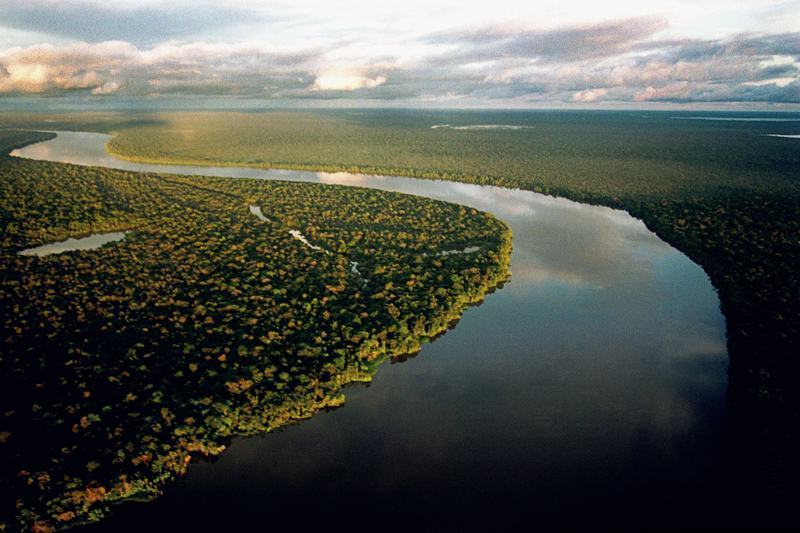Minimal forest loss on Indigenous territories across the Amazon

Minimal forest loss on Indigenous territories across the Amazon
Some of the best-conserved forests in the Amazon have been actively shaped and managed by Indigenous peoples
Amazonian Indigenous territories are crucial for conservation – A new study from the University of Helsinki shows that Indigenous territories represent around 45% of all the remaining wilderness areas in the Amazon, comprising an area of three times the surface of Germany.
University of Helsinki
At a time when the Amazon forests face unprecedented pressures, overcoming divergences and aligning the goals of wilderness defenders and Indigenous peoples is paramount to avoid further environmental degradation.
“In our paper we show that supporting Indigenous peoples’ rights is in the interest of the conservation agenda,” says Dr. Álvaro Fernández-Llamazares from the University of Helsinki. “The future of a substantial proportion of the Amazon’s biodiversity depends largely on coordinated action to support and strengthen Indigenous peoples’ rights across the entire region.”
The authors argue that the convergence of the agendas and priorities of both wilderness-centred conservationists and Indigenous peoples is more important than ever, as some of the government in the region have started to trample over commitments towards globally agreed goals on both the environment and Indigenous peoples’ rights.
“There is no doubt that the Amazon is at a crossroads in its social-ecological history,” adds Dr. Fernández-Llamazares. “Rollbacks on environmental protections and Indigenous Peoples rights across the entire region are opening up vast natural areas to new external pressures.”
All these macroeconomic and political forces are being felt in both wilderness areas and Indigenous Peoples territories. However, disputes on whether conserving wilderness should come at the expense of Indigenous peoples rights undermine potential for collaborative conservation.
Minimal forest loss on Indigenous territories across the Amazon
The study underscores the substantial role of Indigenous territories in buffering against deforestation through advanced geospatial analyses based on available satellite data. These lands account for less than 15% of all the forest loss occurring within the Amazon’s last wilderness frontiers. This is largely evidenced throughout the southern rim of the Amazon, where Indigenous territories represent the only islands of biological and cultural diversity in the larger landscape.
“The concept of wilderness has a contentious history across much of the Global South, as it is based on the assumption that humans have inherently negative impacts on nature,” highlights Prof. Eduardo S. Brondizio, a researcher from Indiana University Bloomington and senior author of the study.
“Yet, the Amazon is a classic example of how long-term interactions between Indigenous peoples and forests can be linked to positive environmental outcomes. We have known for decades that a significant portion of the region’s supposedly pristine forests are in fact cultural forests,” he notes. “Indigenous peoples, and also other traditional communities, show that it is possible to successfully combine forest conservation, management and agroforestry systems.”
In view of this, the authors call for a more socially inclusive notion of wilderness in order to align the agendas and priorities of both wilderness-focused conservationists and Indigenous peoples against a new wave of frontier expansion.
Reference:
Fernández-Llamazares Á, Terraube J, Gavin MC, Pyhälä A, Siani S, Cabeza M, Brondizio ES (2020) Reframing the wilderness concept can bolster collaborative conservation. Trends in Ecology & Evolution 2020. doi: 10.1016/j.tree.2020.06.005
in EcoDebate, ISSN 2446-9394, 29/07/2020
Para pesquisar mais sobre este tema ou outros, use a ferramenta de pesquisa
[CC BY-NC-SA 3.0][ O conteúdo da EcoDebate pode ser copiado, reproduzido e/ou distribuído, desde que seja dado crédito ao autor, à EcoDebate com link e, se for o caso, à fonte primária da informação ]
Inclusão na lista de distribuição do Boletim Diário da revista eletrônica EcoDebate, ISSN 2446-9394,
Caso queira ser incluído(a) na lista de distribuição de nosso boletim diário, basta enviar um email para newsletter_ecodebate+subscribe@googlegroups.com . O seu e-mail será incluído e você receberá uma mensagem solicitando que confirme a inscrição.
O EcoDebate não pratica SPAM e a exigência de confirmação do e-mail de origem visa evitar que seu e-mail seja incluído indevidamente por terceiros.
Remoção da lista de distribuição do Boletim Diário da revista eletrônica EcoDebate
Para cancelar a sua inscrição neste grupo, envie um e-mail para newsletter_ecodebate+unsubscribe@googlegroups.com ou ecodebate@ecodebate.com.br. O seu e-mail será removido e você receberá uma mensagem confirmando a remoção. Observe que a remoção é automática mas não é instantânea.